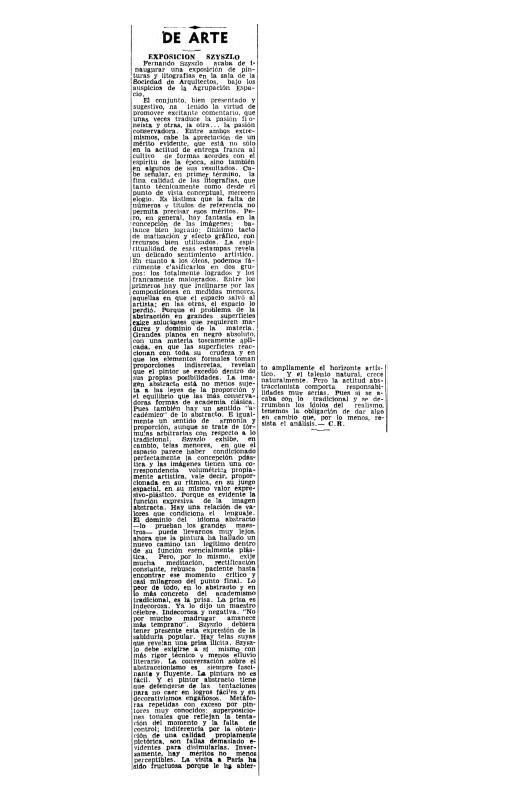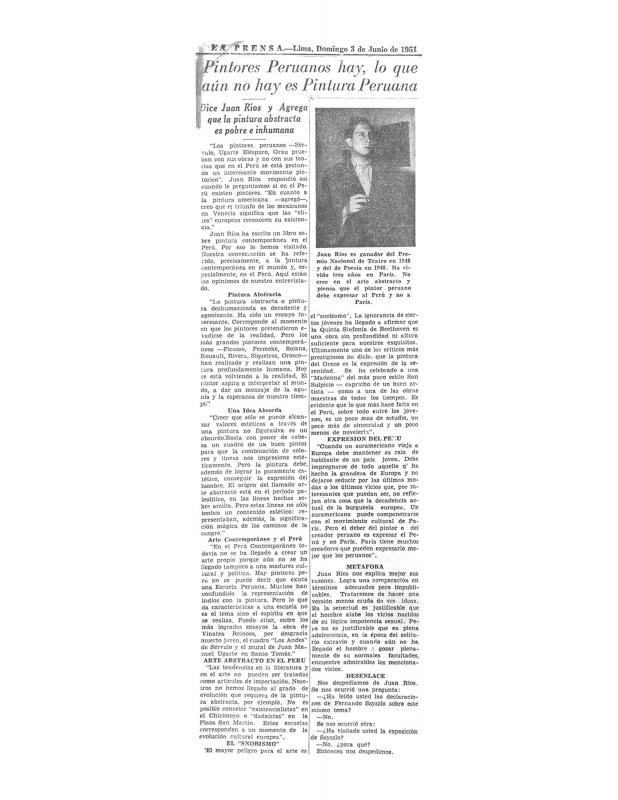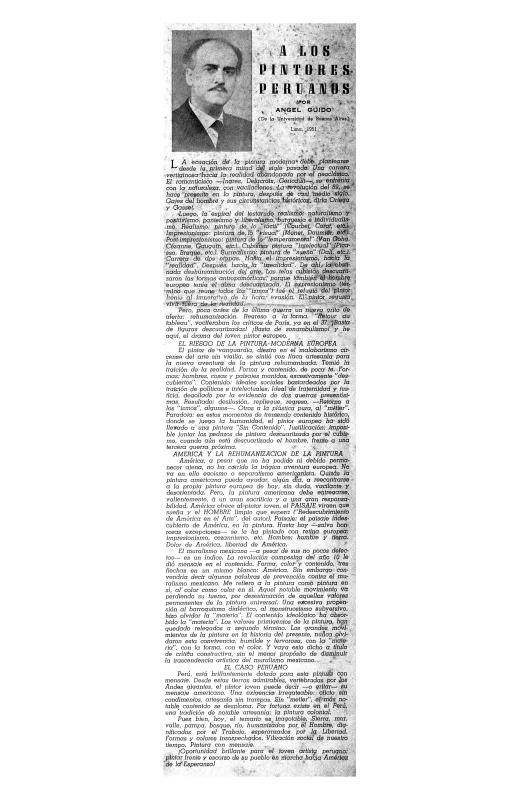This editorial by the Agrupación Espacio was directed—without specifically mentioning him by name—at Samuel Pérez Barreto’s article published in 1951 magazine (Lima, June 11, 1951), in which he discussed the controversial statements made by the painter Fernando de Szyszlo (“En el Perú no hay pintores…” [There are no painters in Peru]), published in La Prensa newspaper on June 6, about his exhibition of abstract paintings at the SAP (Sociedad de Arquitectos del Perú). In early 1951, the Peruvian painter Fernando de Szyszlo (b. 1925) returned to Lima after having spent almost two years in Paris, a period that strongly influenced his evolution toward Abstract Expressionism under the guidance of the German artist Hans Hartung (1904–1989). In May of that same year Szyszlo had an exhibition of his most recent work at the Sociedad de Arquitectos in Lima, sponsored by the Agrupación Espacio, which was the driving force behind calls for artistic and architectural renewal in Peru. The exhibition received overall positive reviews in the press, but with some reservations expressed by the influential Peruvian critic Carlos Raygada (1898–1953) [see “De arte: exposición Szyszlo” (doc. no. 1150738)]. Szyszlo’s belligerent response was overshadowed by his (now famous) statement in La Prensa newspaper: “there are no painters in Peru” (doc. no. 1137793). By dismissing contemporary art in Peru, Szyszlo sparked the nation's first debate on the subject of nonfigurative art by provoking an angry reaction from local intellectuals and artists. Szyszlo’s statement referred to the lack of local referents for artists who wanted to explore what was going on in art movements elsewhere in the world. But the debate shed light on the defining features of local modern art, exposing the earliest schisms in the progressive intellectual community. The defense of “telluric abstraction” as the only legitimate alternative for Peruvian art put the critic Samuel Pérez Barreto (1921–2003) at odds with his old colleagues at the Espacio group, which roundly rejected any kind of tendentious identification that sought to reduce Peruvian art to “Andean” art. Szyszlo was involved in the first debate about nonfigurative art in Peru, when he provoked an angry reaction from local intellectuals and artists. See the following articles: “Pintores peruanos hay, lo que aún no hay es pintura peruana: dice Juan Ríos y agrega que la pintura abstracta es pobre e inhumana” (anonymous) (doc. no. 1137808); “Cristina Gálvez opina que sí hay pintores en el Perú: citó a cuatro: ‘Hay que ser muy intelectual para ser abstracto’ dijo y añadió luego ‘Szyszlo no es intelectual’” (anonymous) (doc. no. 1150897); “Qué arte abstracto ni que nada, el arte es esencialmente uno...: lo que debe hacer el pintor es ‘pintar’” by Sérvulo Gutiérrez (doc. no. 1150851); “Gran problema del arte peruano es la falta de críticos: "Xanno": Alejandro Romualdo Valle agregó que los que escriben sobre arte son improvisados o huachafos” (anonymous) (doc. no. 1150928); “‘Julia Codesido y Sabogal son buenos pintores’: Aquilles Ralli cree, además, que muchos sólo buscan la fama por medio de la publicidad” (anonymous) (doc. no. 1150882); “El debate sobre pintura: carta del Sr. Juan Ríos R.” (doc. no. 1150912) and “Balance de una polémica: cuatro preguntas fundamentales” (doc. no. 1137882), both written by Ríos; and “A los pintores peruanos” by Ángel Guido (doc. no. 1150943)].










